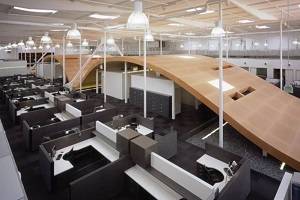March 21, 2013
$16m revamp of High Commission in London to showcase Canada’s identity
 As part of the Canadian government’s consolidation of its diplomatic mission in the UK, it has put up for sale MacDonald House in Grosvenor Square in London and will look to develop its other main building Canada House in Trafalgar Square. MacDonald House was formerly the American Embassy until 1961 and the Canadian Government has been looking to consolidate its operations for a number of years. As well as moving its functions under one roof, the Government has earmarked $16 million for a revamp of Canada House which will also be designed to showcase Canadian values and know-how.
As part of the Canadian government’s consolidation of its diplomatic mission in the UK, it has put up for sale MacDonald House in Grosvenor Square in London and will look to develop its other main building Canada House in Trafalgar Square. MacDonald House was formerly the American Embassy until 1961 and the Canadian Government has been looking to consolidate its operations for a number of years. As well as moving its functions under one roof, the Government has earmarked $16 million for a revamp of Canada House which will also be designed to showcase Canadian values and know-how.




























March 21, 2013
Video: how networks of engaged people can achieve more than nations
by Mark Eltringham • Architecture, Comment, Facilities management, Property, Technology, Workplace design
[embedplusvideo height=”157″ width=”230″ standard=”https://www.youtube.com/v/f2k2_dN-REc?fs=1″ vars=”ytid=f2k2_dN-REc&width=230&height=157&start=&stop=&rs=w&hd=0&autoplay=0&react=1&chapters=¬es=” id=”ep8069″ /]
In spite of all its flaws, the Internet can empower people to address specific issues in ways that exceed the abilities of nation states. In this energising talk for the Royal Society for the Arts, Don Tapscott, a Canadian businessman and now one of the world’s leading authorities on the impact of technology on people and societies, explores the idea that engaged and connected people can work together to innovate and solve issues that can seem intractable to the world’s governments and international bodies, including the most serious demographic and environmental challenges we all face.